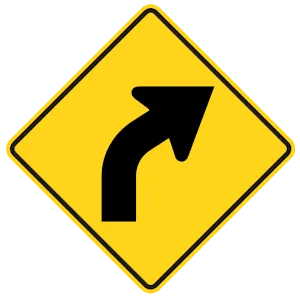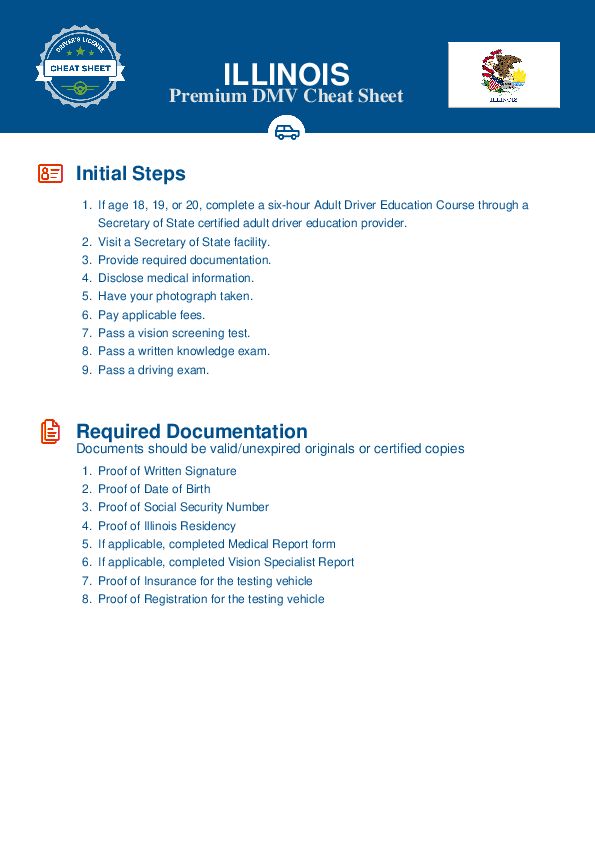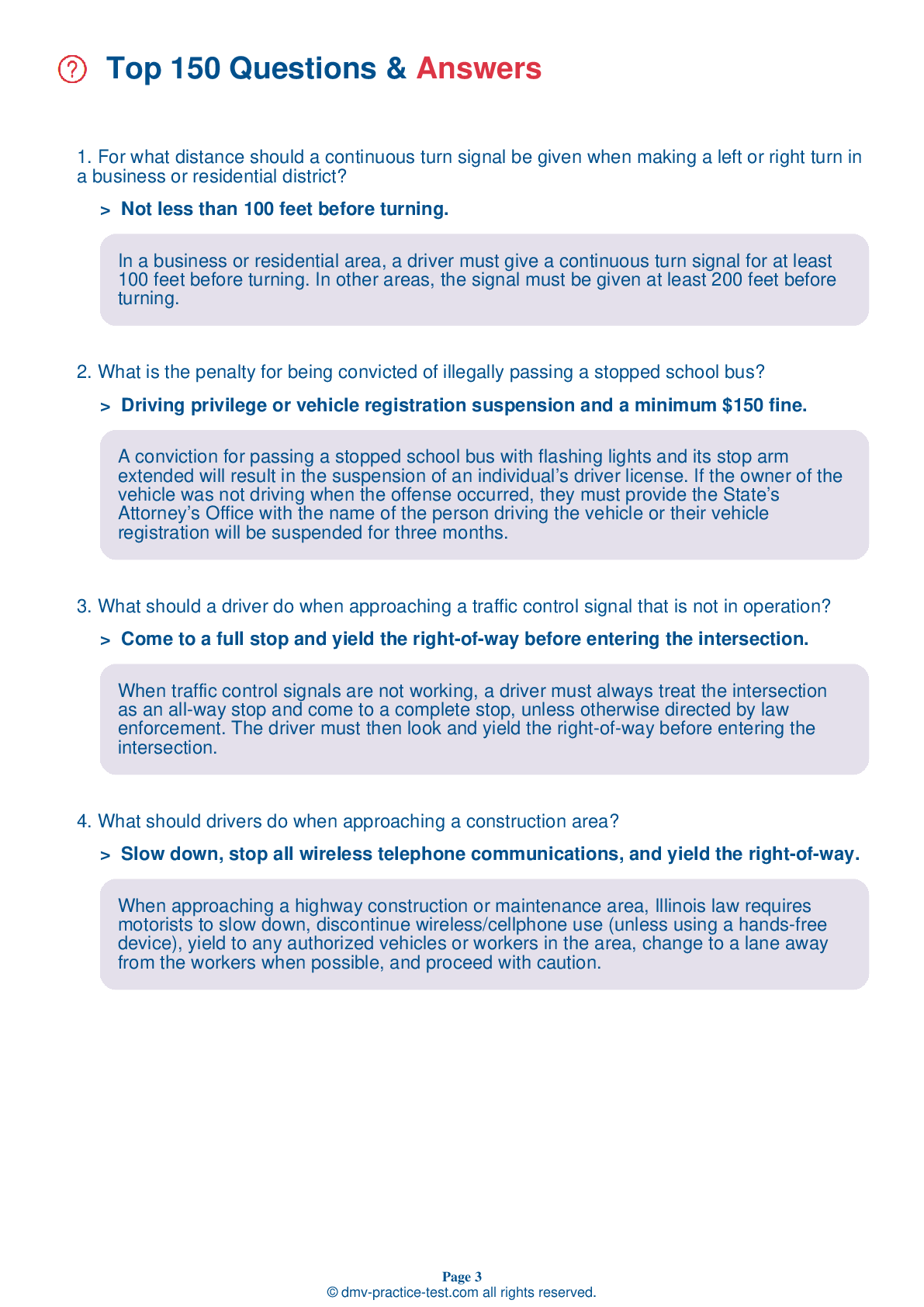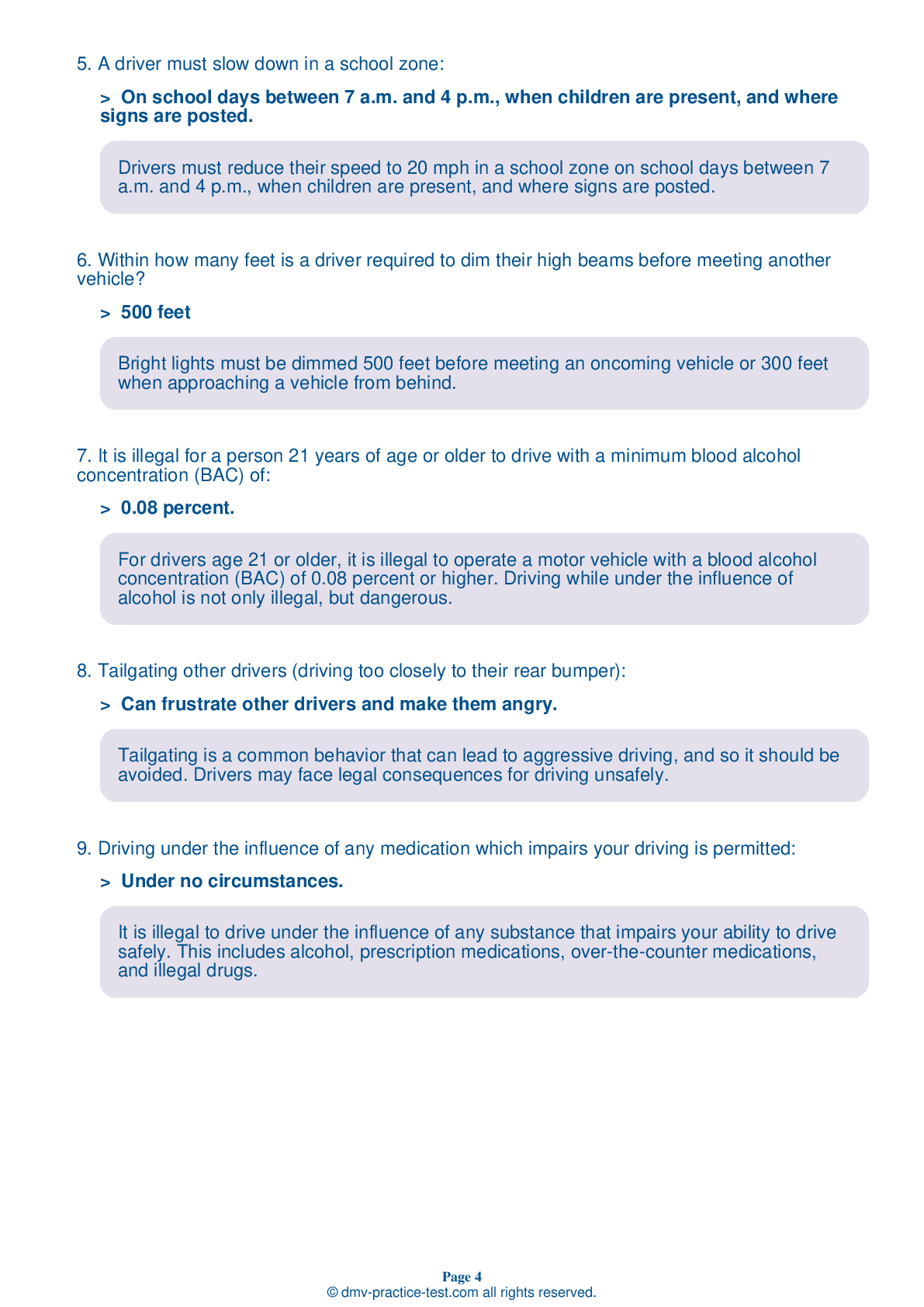FREE Illinois DMV Practice Test #16 Page 2 of 3
For January 2025, this set of Illinois DMV practise tests has been updated. It includes questions based on the most important traffic signs and rules for 2025 from the Illinois Driver Handbook. To study for the DMV driving permit test and driver's licence exam, use actual questions that are very similar (often identical!) to the DMV driving permit test and driver's licence exam.
Each question on the practise exam has a tip and explanation to help you recall the ideas. Questions about traffic rules, traffic signs, and driving statutes, as well as information from the Driver Handbook, will be included in the written portion of the official DMV test.
You must properly answer 38 of the 35 questions to receive a passing mark. To help you prepare for your Illinois instruction permit or driver's licence, take our DMV practise test.
The DMV exam is offered in a variety of languages.
Using any form of testing help will result in an automatic fail, and the DMV may take further action against your driver's licence, so avoid it.
13 . To turn left from a multilane one-way street onto a one-way street, you should start your turn from:
When turning left from a one-way street onto another one-way street, you should begin the turn from the far left lane.
14 . What is the penalty for being convicted of illegally passing a stopped school bus?
A conviction for passing a stopped school bus with flashing lights and its stop arm extended will result in the suspension of an individual’s driver license. If the owner of the vehicle was not driving when the offense occurred, they must provide the State’s Attorney’s Office with the name of the person driving the vehicle or their vehicle registration will be suspended for three months.
15 . This sign means:
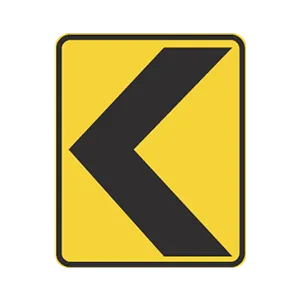
This sign warns a driver of a change in direction or a narrowing of the road. A driver may find several of these signs on the outside of a sharp curve or on approaches to a narrow bridge.
16 . Increase your following distance when driving behind a large vehicle:
Drivers of trucks, buses, vans, and any vehicles pulling campers or trailers may not be able to see you if you are driving directly behind them. Increase your following distance when driving behind one of these vehicles. Additionally, large vehicles can block your view of the road, so increase your following distance to look around the sides of the vehicle and see the road ahead.
17 . If moving with a stream of vehicles across a railroad track, it is safe to stop on the track for a short period of time.
It is prohibited to stop, stand, or park on a railroad track. You should never cross railroad tracks unless there is room for your entire vehicle on the other side of tracks.
18 . Drivers are always required to stop for a stopped school bus when driving on a two-lane road.
Drivers are always required to stop for a stopped school bus when driving on a two-lane road, regardless of their direction of travel. You should exercise caution when driving near children.
19 . This yellow sign means:
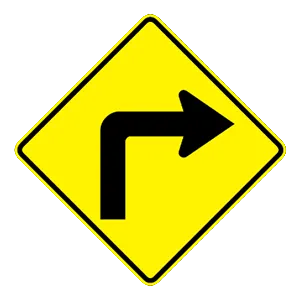
Some warning signs have a fluorescent yellow-green background. These signs warn of upcoming conditions, including roads with curves and sharp turns.
20 . This sign tells a driver that:
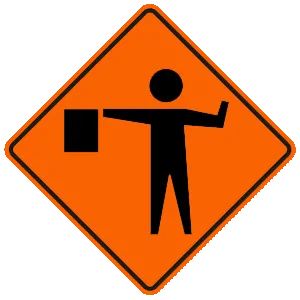
This sign warns that there is a flag person ahead. Always follow directions given by a flagger. Flaggers normally wear orange or yellow vests, yellow-green shirts, or bright jackets. They use paddles and red flags to direct traffic through the work zone and to let workers or construction vehicles cross the road.
21 . Regardless of fault, a crash report must be filed by the driver of a vehicle if the crash involves death, bodily injury, or property damage of more than $1,500 (or more than $500 if a vehicle is uninsured).
Regardless of fault, a crash report must be filed by the driver of a vehicle if the crash involves death, bodily injury, or property damage of more than $1,500. If any vehicle involved in the crash is uninsured, a report must be filed for $500 worth of damage or more.
22 . You see pedestrians near the road. You should:
Watch for any pedestrian who may cross your path. If you see pedestrians near the road where you are driving, slow down and be prepared to stop, if necessary.
23 . This sign is a:
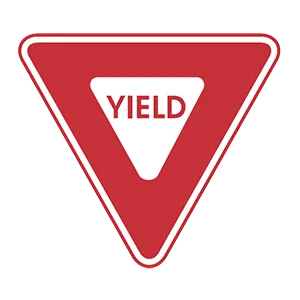
A downward-facing triangular sign is always a yield sign. Drivers must be prepared to slow down or stop when approaching a yield sign.
24 . This sign is used to warn drivers about:
